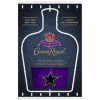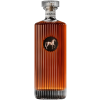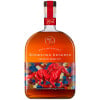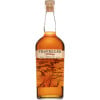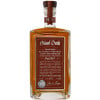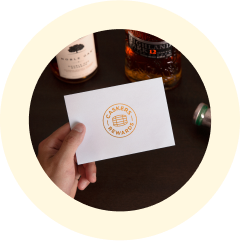About Highland Park Viking Scars 10 Year Old Single Malt Scotch Whisky
Highland Parks has tellingly named one of its signature whiskies Viking Scars. Let us explore that name for a second. The distillery is located in the Orkney Islands in the far north of Scotland, a place that was ruled by Vikings until 1468. To this day, a third of the population has Vikings' DNA. And boy does it show! Vikings Scars is made the same way whiskies were made here 220 years ago.
All the peat for smoking barley is grown locally: the peat that has defied the 100 miles per hour winds for over 9000 years is dense and burns slowly, creating the complex aroma of Viking Scars. They still cut that peat by hand, and what is more, they still turn their malt by hand, maintaining the constant airflow and just the right amount of moisture for the whisky to fully absorb the smoke. It’s a Viking's whisky indeed.
The seven times awarded Viking Scars 10 Year Old Single Malt has matured in ex-sherry casks of European and American oak. It is a fresh and bright whisky, filled with flavors of crushed citrus with hints of honey and smoked peat coming through.
Grab your bottle today!
About Highland Park
Situated in the Orkney archipelago in Northern Scotland, Highland Park Distillery was founded in 1798 by Magnus Eunson. The name of the distillery is derived not from the region of Scotland known as The Highlands — the Orkney islands are not a part of The Highlands — but rather from the region known as High Park, where the distillery was founded.
Today, over two centuries after its founding, Highland Park Distillery remains one of the few Scottish distilleries that continues to hand-turn, malt, and peat its own barley. "You have to be careful here on the malting floor," says Eric Tait, Highland Park's Maltman. "You find it can get a wee bit slippery underneath. I have to turn the malt every eight hours to prevent the roots getting tangled and to get it all aerated properly. The airing also helps it to grow. The malt will be on the floor for seven days, and I'm running five floors at the moment."
After malting the barley, Highland Park Distillery smokes it using peat sourced from Hobbister Moor, a peat bog located approximately seven miles from the distillery. Hobbister Moor peat is sourced from floral heather bushes, which burn hotter and cleaner than the grassy peats of Islay. Also, the peat sourced from Hobbister Moor has greater derivatives of carbohydrates and a lower concentration of lignin than peat from Islay, giving Highland Park's peat a unique chemical fingerprint.
The peat sourced from Hobbister Moor is "absolutely fundamental in understanding the flavor of Highland Park Whisky," says Russell Anderson, the distillery manager. Together with Orkney's unique environment (the temperate, moist climate of the archipelago results in an even maturation process), the peat gives Highland Park Whisky its traditional malty flavors that are tempered by just a subtle touch of smoke.
About Scotch
Scotch is the most popular whisky in the world and is considered the king of them all! There are five whisky regions in Scotland (six if you count the not officially recognized Islands), and each of them produces spirits with unique properties and distinct tasting notes. (The type of grain used determents the type of the scotch.)
Malt whisky is made of malted barley, and grain whisky uses other grains like corn or wheat. Most of the time, a whisky is blended from different distilleries hence the name blended scotch, but if a malt whisky is produced in a single distillery, we get something extraordinary called a single malt.
Check out our impressive selection of scotch whiskies, find your new favorite in the Top 10 scotch whiskies, or explore our treasury of rare & hard to find scotch whiskies.
